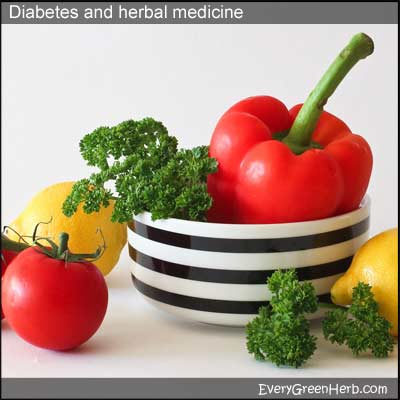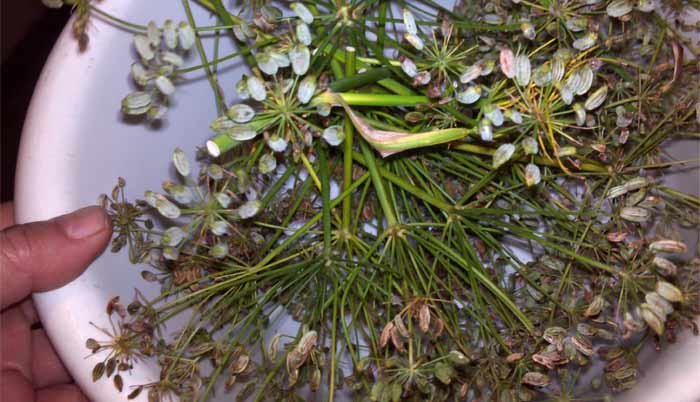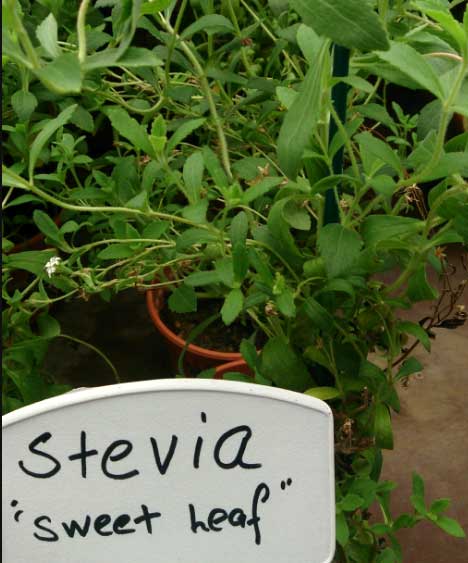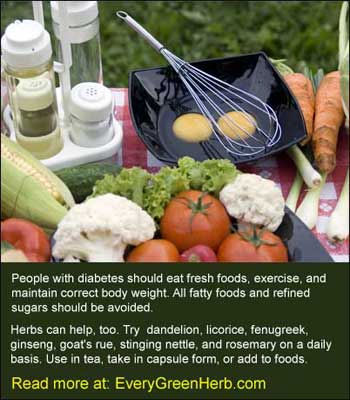Diabetes herbs
Medicinal herbs can help regulate blood sugar.
Herbs that balance and stabilize blood sugar levels can help most diabetics feel better. Dandelion, licorice, fenugreek, ginseng, yellowroot, goldenseal, stinging nettle, plantain seeds, green tea, and rosemary are medicinal herbs that can help keep blood sugar levels in balance.

Diet is key!
People diagnosed with diabetes should be especially concerned with diet. They need to avoid white sugar like the plague. Anyone with diabetes will live a longer, healthier life if they watch what they eat and stick to doctor's orders.
Diabetic patients need to eat as healthy as possible, exercise daily, and maintain their correct body weight. All highly processed foods and refined sugars should be avoided. Lots of vegetables should be eaten every day.
High fiber is a key to controlling sugar diabetes so slow-burning complex carbohydrates like whole grains should be consumed regularly. Healthy foods release nutrients slowly thus preventing rapid blood sugar spikes.
Diabetics should also eat lean protein for breakfast with smaller, frequent meals throughout the day.
Herbs that can help diabetics
Fenugreek, which I mentioned before, actually contains six blood-sugar regulating compounds. Other herbs that help in the formation of insulin include garlic, bilberry, burdock, aloe vera, and astragalus.
Some herbs help the body use excess insulin and include bay leaf, cinnamon, clove, and turmeric.
Try a refreshing drink of black tea with an added pinch of cinnamon, cloves, and turmeric. Pour over ice to beat the summer heat or drink while hot to warm up in the winter.
Some herbs may interact with over-the-counter and prescription medications so never jump into anything without doing plenty of research. Always consult with a qualified herbalist or seek advice from your healthcare professional before taking any new herbal remedy, especially if you are taking insulin or prescription drugs.

What is sugar diabetes?
Simply put, diabetes refers to a group of diseases that affect how your body uses the blood sugar known as glucose. Correct glucose levels are important to health because cells in your body use glucose for energy.
Without the correct amounts of glucose, your muscles, tissues, and brain cannot function properly.
Type one diabetes can develop at any age, though it often appears during childhood or adolescence. Type two diabetes can develop at any age, though it's more common in people older than 40.
Often people are diagnosed as being at risk for diabetes. If this is the case, eating right and living a healthy lifestyle, will usually prevent diabetes from becoming a reality.
We should all avoid sugar.
If you are diabetic and avoiding sugar, talk to your friends! Teach them about the dangers of sugar. Let them know that sugar not only affects diabetics, but also can feed cancer cells and cause a bunch of other problems such as obesity.
Sugar is hiding everywhere in today's diet and its effects are creating more deaths than automobile accidents.
Negative effects of sugar consumption
In this eye-opening video, Dr. Jody Stanislaw, a Naturopathic Doctor who has been studying the negative effects of sugar since being diagnosed with type 1 diabetes at the age of seven, dives into how the widespread negative effects of sugar are effecting us all.
More about white sugar in our culture
Centuries ago, sugar beets and sugar cane were eaten as a food. Sugar was not added to everything like it is today and it was not highly processed.
According to Wikipedia's page on sugar, Pliny the Elder, a 1st-century CE Roman, describes white sugar as follows, "Sugar is a kind of honey found in cane, white as gum, and it crunches between the teeth. It comes in lumps the size of a hazelnut. Sugar is used only for medical purposes."
Too bad for us that sugar became much more than a medicine. In today's society, sugar is an addiction.
For many centuries, sweets were a treat, and usually made out of honey or syrup. Then industrial sugar mills were built. Big food corporations began marketing processed sugar and the white stuff became more and more of a staple in our diets.
Our obsession with sugar has been fueled by greedy businessmen sitting in board rooms and high-rise office buildings. These CFO's don't care about us, they care about profits. Remember that when you reach for the sugar bowl.
Are honey and syrup healthier than white sugar?
Using a teaspoon of honey or a tablespoon of real maple syrup will probably not hurt you, although people taking insulin should do what their doctor advises.
The problem is all the hidden sugars in processed foods. High fructose corn syrup comes to mind. That stuff is worse than white sugar! It gives me indigestion and causes a lot of other health problems. Brown sugar is just white sugar with caramel coloring so it should be avoided as well as the white.

If you have a sweet tooth, try fennel.
Fennel and fennel essential oil can be used to stop sugar craving. Put a drop of oil under your tongue or chew the seeds instead of reaching for candy.
There are two types of diabetes.
Type one is usually more severe, probably requiring insulin injections, and is sometimes called juvenile diabetes. Type two is also serious although usually develops in adults and may be controlled with diet.
Type two is thought to be an immunity disorder. It is a chronic degenerative disease in which the body's ability to use carbohydrates is reduced due to insulin resistance. Insulin resistance causes glucose to build up in the bloodstream and deprives cells of nutrients.
Causes of diabetes are not completely understood but may include poor diet, chromium deficiencies, obesity due to fat metabolism disorders, pancreas and liver malfunctions, allergies, and hypothyroidism. Some research hints that a virus may be the cause.
Type two diabetes has become an epidemic in the United States. The Center for Disease Control estimates that in the United States, 79 million Americans suffer from diabetes type two. Most are undiagnosed.
Diabetes is the primary cause of renal failure, non-traumatic lower-limb amputations, and newly diagnosed retinopathy. Diabetes type two is the 7th leading cause of death in the United States.

Symptoms of diabetes include excessive hunger and thirst.
Symptoms of diabetes include high blood sugar, constant hunger, dry or itchy skin, excessive thirst, lack of energy, apathy, mental confusion, frequent kidney infections, cramps, blurred vision, menstrual problems, excessive urination, obesity, hypertension, decreased immunity, and accelerated aging.
Long term complications include scarring of the retina, damage to peripheral nerves, chronic kidney failure, arteriosclerosis, and disorders of the thyroid. Complications from diabetes may be disabling or even life-threatening.
Drink water to stay hydrated!
Staying hydrated is very important since water helps the kidneys flush out excess sugar from the body. Drinking herbal teas or just plain water keeps your blood sugar levels at more stable levels.
Do not drink sweetened drinks or over 8 ounces of fruit juice daily. Stay away from colas and other sodas. They are full of sugar!
More about diabetes and diet
Diabetes is a complicated disease that involves more than just controlling glucose levels. Maintaining correct body weight, staying hydrated, and exercising are all important to keeping diabetes under control.
Foods containing chromium are good for controlling diabetes. Raw onions, broccoli, turkey, raw tomatoes, lettuce, grape juice, and potatoes contain chromium, although no one food is especially rich in this nutrient.
Green salads, cabbage, citrus fruits, ginger, beans, flax seed oil, olive oil, coconut, okra, and turmeric are recommended additions to the diet.
Fatty fish like salmon and sardines contains omega 3's which can really help control blood sugar levels. Try to work them into your meals at least once or twice a week.
Diabetics often develop eye problems. Onions, especially the outer skin, contain a compound that helps protect the eyes. When preparing a stew or soup, try leaving the dried skins on the onions. Find more home remedies and herbs for the eyes.

Stevia can add sweetness to a diabetic's life.
Another herb that is useful in the treatment of diabetes is stevia. Known as sweet leaf, stevia is extremely sweet and can be used in small amounts as a food supplement (stevia extracts are up to 300 times sweeter than sugar and cause no apparent rise in blood glucose levels).
Stevia has been shown to actually enhance glucose tolerance. This herb, related to the sunflower, is also used in the treatment of obesity since it has few calories.
Too much stevia can be dangerous so don't get carried away using it. Potential side effects linked to stevia extracts and concentrates include nausea, vomiting, indigestion, cramping bloating, endocrine disruptions (hormone imbalances), low blood pressure, and low blood sugar.
Stevia is also an herbal diuretic so always drink plenty of water when using it. Stevia comes in many forms. The more refined and concentrated, the less I trust stevia's safety. The fresh or dried green leaves of stevia are considered safe, even in in larger amounts. When using the powdered stevia or liquid stevia, read ingredients list and follow label directions.
Goat's Rue can lower sugar levels but use with caution.
According to Wikipedia a herb known as galega officinalis contains a substance called galegine, which lowers blood glucose. Galega, also called Goat's Rue, is the foundation for the the discovery of metformin, a treatment for managing symptoms of diabetes.
Goat's Rue may interfere with prescription drugs so always check with your healthcare professional before taking it. Goat's Rue can also affect iron absorption and can cause headaches so use with caution.
Goat's Rue is a hardy perennial herb that grows on river banks and in wetlands. Some people consider it an invasive weed so be careful if planting in your garden. Besides its use as an herbal remedy for diabetes, Goat's Rue has been used as a herbal remedy to treat bubonic plague, worms, and snake bites.
Chinese and Indian herbal remedies for diabetes
In the Chinese and Indian cultures, herbal medicine is regularly used to treat and protect the body from diabetes. Approximately 800 medicinal plants have been identified as being useful in the treatment or prevention of this disease including:
- Goat's Rue
- Bitter melon
- Mulberry leaves
- Fenugreek
- Huang Lian
- Huang Qi
- Loquat
- Ginkgo biloba
- Ginseng
- Five-flavor berry
- Kudzu root
- Basil
Bitter melon can help manage diabetes.
Bitter melon is a traditional medicinal herb from Asia that has been a popular treatment of diabetes and diabetes-related complications for centuries. Bitter melon fruit contains compounds which regulate carbohydrate metabolism and help keep sugar levels regulated.
Prickly pear and diabetes
Prickly pear is used as a food and as a medicinal herb. Native to Central and South America, the herb is used as a home remedy to balance glucose levels.
Prickly pear cactus is reported to have a very high-soluble fiber and pectin content that may prevent the absorption of sugars. Read more about herbs and diabetes at the National Center for Biotechnology Information.
Treat symptoms of diabetes with massage and reflexology.
Massage and reflexology can help treat diabetes. Both of these alternative medicines promote circulation and feelings of well-being which is good for the body, the mind, and the spirit.
In massage, use a good oil. Blend carrier like almond or grapeseed oil, with neroli essential oil, lemon essential oil, frankincense essential oil, or lavender essential oil for a massage that helps circulation and relieves stress naturally.
Other essential oils that help balance secretions from the pancreas include eucalyptus essential oil, geranium essential oil, juniper essential oil, and rosemary essential oil.
Foot massage and reflexology can do wonders for diabetic patients by reducing inflammation and pain while promoting healing. Concentrate on the sides and bottom of the big toes and the balls of the feet.
Other pressure points for treating diabetes include below the knees on the front of the legs, behind the knees, and the area near the wrist below the little finger.
Exercise can really help diabetic patients.
The less active you are, the greater is your risk for diabetes. Exercise helps you control your weight, uses up glucose as energy, and makes your cells more sensitive to insulin. Want to control your diabetes naturally? Then get up and move!
Get rid of those extra pounds.
Losing extra pounds is not hard once you make up your mind to do so. Things that can help include keeping a food journal, using a smaller plate, measuring portions, avoiding all-you-can-eat restaurants, eating slowly, and drinking water before reaching for a snack.
Get enough sleep!
Try to get eight hours of sleep every night. Sleep gives your body a time to heal and repair itself which is important for everyone, not just diabetic patients. Eat right, exercise, drink plenty of water, get some morning sunshine, and get a good night's rest. These things will really help keep diabetes and other diseases under control.
*Keep in mind that licorice, yellowroot, and some some other potent herbs are only to be used for two weeks at a time. Always consult with a healthcare professional before using any herbal remedy especially if pregnant, nursing, or taking other medications. Do not treat babies, the elderly, or pets with herbal remedies without consulting a qualified healthcare provider.

Sources:
https://www.ncbi.nlm.nih.gov/pmc/articles/PMC3662109/
Blessings to you and yours!
Thanks so much for reading my blog. Jan.

*Note - the information on this website has not been evaluated by the Food and Drug Administration.
© 2005-2024 website design and content by Janice Boling